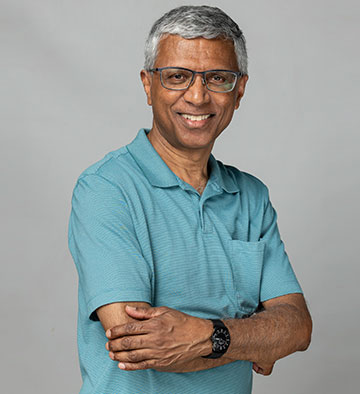
HydroGraph’s virtuous circle business model: Q&A with Dr. Ranjith Divigalpitiya

Dr. Ranjith Divigalpitiya,
Chief Science Officer.
Dr. Ranjith Divigalpitiya is the Chief Science Officer at HydroGraph and is a graphene materials expert focused on commercializing graphene and graphene-like materials. In addition, Dr. Divigalpitiya leverages his vast battery expertise as he works on R&D for battery applications at HydroGraph. Prior to joining HydroGraph, Dr. Divigalpitiya was a Senior Specialist/Physicist at 3M Canada for more than 27 years, where he invented 3M’s graphene-like carbon coatings and contributed to 190 invention submissions and 20 granted US patents. He has authored more than 33 peer-reviewed papers, within his areas of research, including digital x-ray imaging, electrically conducting adhesives, air and water purification, battery materials, and nano scale coatings. Dr. Divigalpitiyal received his B.Sc. degree in physics from the University of Sri Jayawardanapura, Sri Lanka, and his Master of Science and PhD degrees in solid state physics from Simon Fraser University, Canada.
Q: Dr. Divigalpitiya, you have talked about the HydroGraph business model as being a “virtuous circle” model, can you elaborate on that?
A: Yes. We have physically co-located R&D and manufacturing together, in the same building, with little-to-no barriers between these two critical groups with the intent of facilitating communication and idea generation between them. Basically, this type of organization is non-existent among mature corporations today, but it is seen more with smaller startups. We will have manufacturing working shoulder-to-shoulder with physicists, chemists, biologists, and engineers.
Q: What are the advantages of this type of configuration?
A: Based on my experience at 3M, processes go much faster, more smoothly, and we will be more productive because the interactions and communication between manufacturing and science becomes easy. Manufacturing and the scientists are talking day-to-day and idea generation is easier, and it quickly becomes a “team” environment. When these groups are not co-located there is a sort of barrier which is difficult to overcome.
Q: Are there other benefits to this model?
A: Adjustments are much faster; if you see something going wrong you can respond very quickly. Scientists will be right on site to see what’s happening. Also, the environment is less constrained allowing the team to be more agile and it’s easier to come up with new ideas. The intimate relationship is the key thing as without that atrophies tend to build up. This way the team will be more focused, and focused on the right things. Also, the team will be able to pivot very quickly as they see significant new opportunities arise.
Q: What happens if the team comes to a loggerhead, where the scientists feel one way and the manufacturers feel a different way; who adjudicates a situation like this?
A: I think business should override since it is a commercial enterprise. If you want to grow, if you want to be in a place where you can do very interesting work and very important work in the future, then you have to grow the business. As a scientist, I don’t love saying this, but this is the way it should work.
Q: Dr. Divigalpitiyal, how would you summarize the work being done at HydroGraph?
A: We are forging a path to the next generation advanced material revolution with an innovative, environmentally friendly technology and a great dedicated team.
About Us
The HydroGraph Blog reveals how next-generation graphene is reshaping plastics, composites, coatings, concrete, lubricants, energy storage, and biosensors. If you’re pushing for lighter, stronger, more efficient materials, it cuts straight to the breakthroughs – and trade-offs – driving the next wave of engineering innovation.
